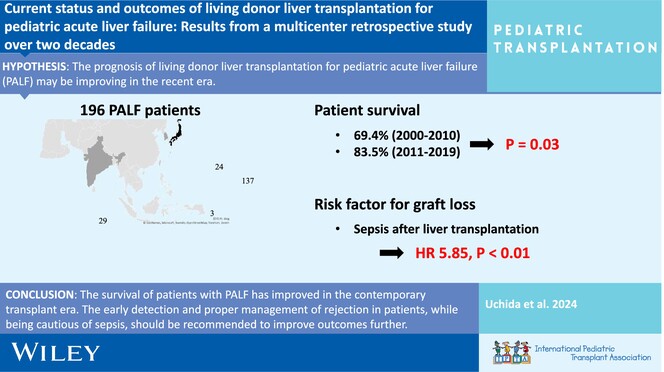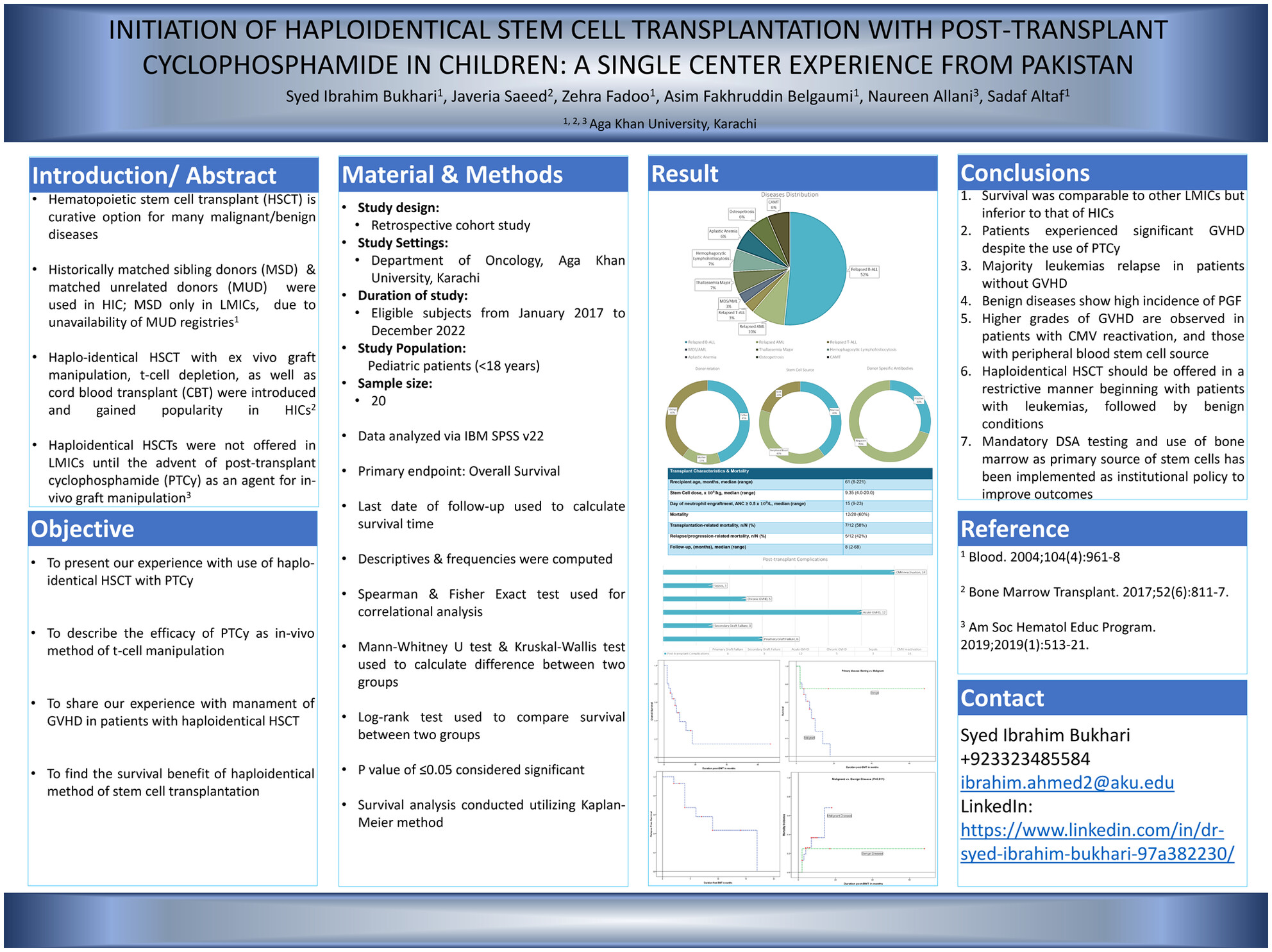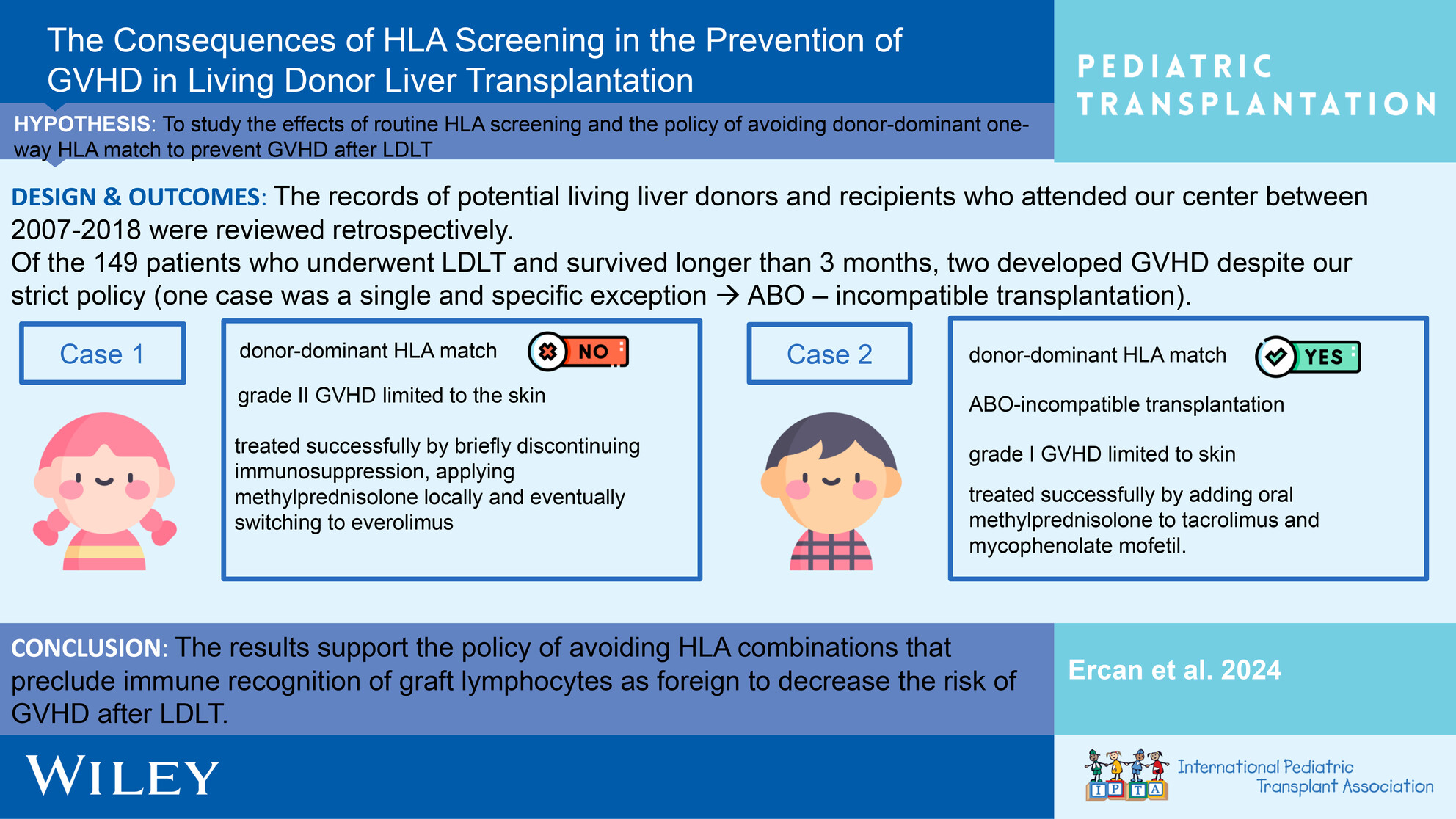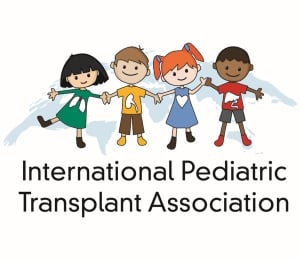Journal list menu
Export Citations
Download PDFs
ISSUE INFORMATION
ORIGINAL ARTICLE
Elastography—The New Standard in the Assessment of Fibrosis After Pediatric Liver Transplantation?
- First Published: 29 July 2024
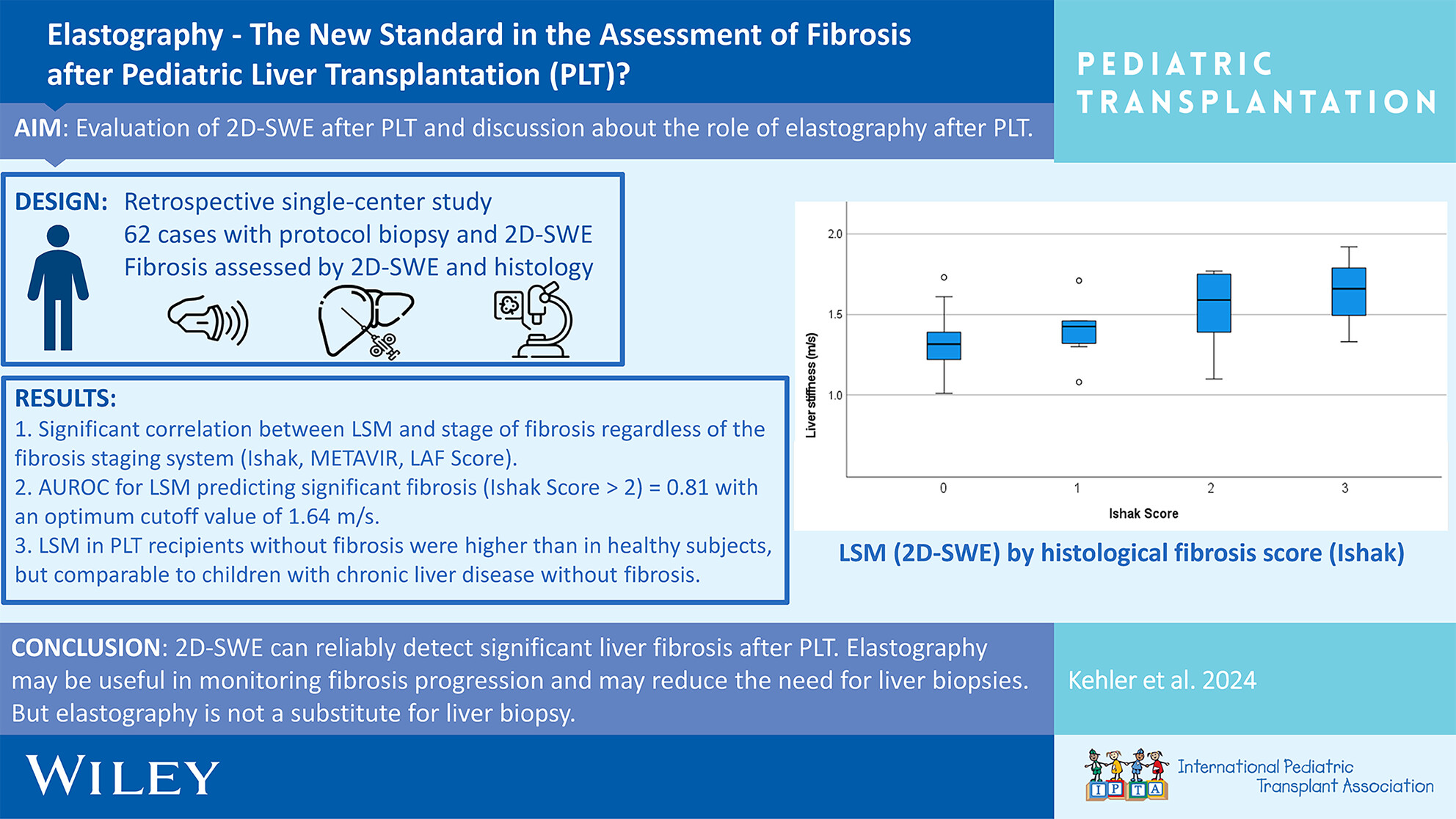
2D-SWE reliably detects significant liver graft fibrosis in pediatric liver transplant recipients, including split-liver cases. This non-invasive method shows promise for improving long-term outcomes and reducing the need for surveillance biopsies, though it does not replace the necessity of liver biopsies.
Long-Term Outcomes of Living Donor Liver Transplantation for Methylmalonic Acidemia
- First Published: 05 August 2024
COMPREHENSIVE REVIEW
Kidney Paired Donation—European Transnational Experience in Adults and Opportunities for Pediatric Kidney Transplantation
- First Published: 08 August 2024
MINI REVIEW
COMPREHENSIVE REVIEW
Detection of Subclinical Rejection in Pediatric Kidney Transplantation: Current and Future Practices
- First Published: 15 August 2024
ORIGINAL ARTICLE
Reducing Hospital Length of Stay and Hepatic Artery Thrombosis Rates for Children Receiving a Liver Transplant: A Single-Center Experience From 2000 to 2021
- First Published: 15 August 2024
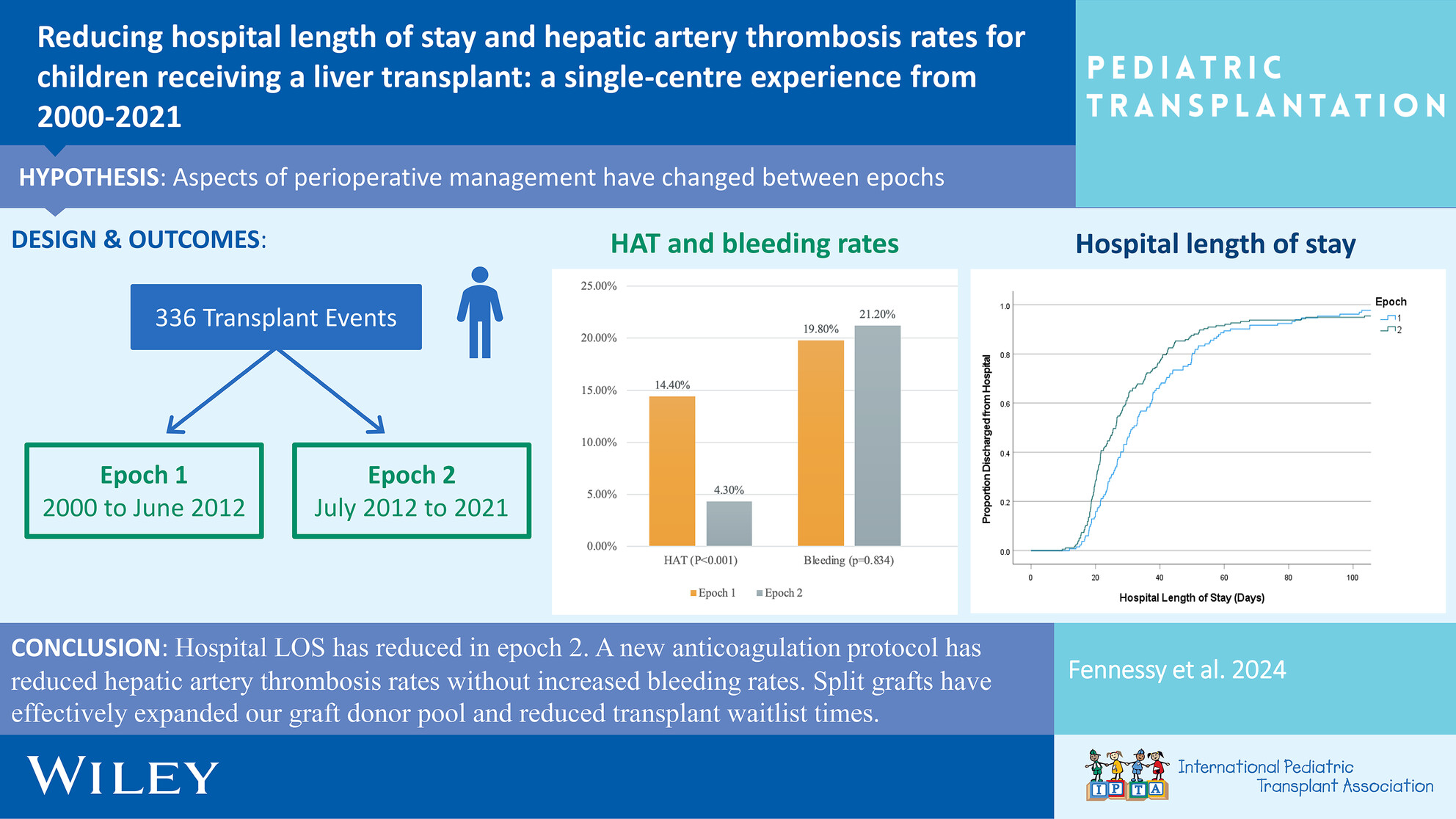
A new anticoagulation protocol has helped reduce hepatic artery thrombosis rates and hospital length of stay in pediatric liver transplant recipients. To achieve better outcomes, recent emphasis has been placed on early extubation, and increased use of split liver grafts, which has successfully expanded the donor pool.
Comparison of Long-Term Outcomes Achieved With Live Donor and Split Deceased Donor Liver Grafts in Pediatric Liver Transplantation
- First Published: 19 August 2024
The Adolescent Transplant Recipient: An Overview of Neurocognitive Functioning and Implications for Long-Term Outcomes
- First Published: 16 August 2024
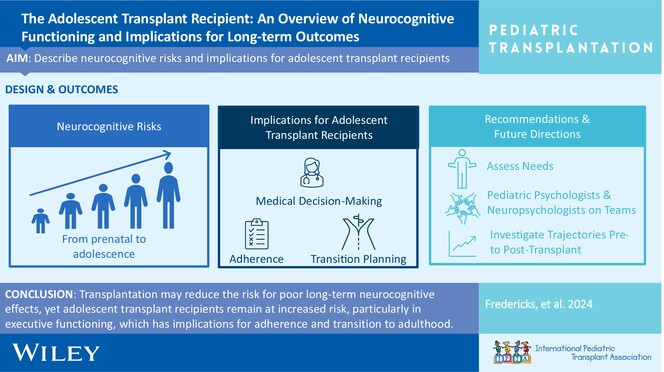
This paper provides an overview of neurocognitive functioning in youth with end-stage organ dysfunction with discussion of implications for adolescent transplant recipients. While neurocognitive functioning may improve post-transplantation, it is important to understand the trajectory of neurocognitive development starting in transplant candidacy to evaluate the implications of early deficits.
Long-Term Amino Acid Homeostasis, Neurodevelopmental and Growth Profiles Following Liver Transplantation in Maple Syrup Urine Disease
- First Published: 19 August 2024
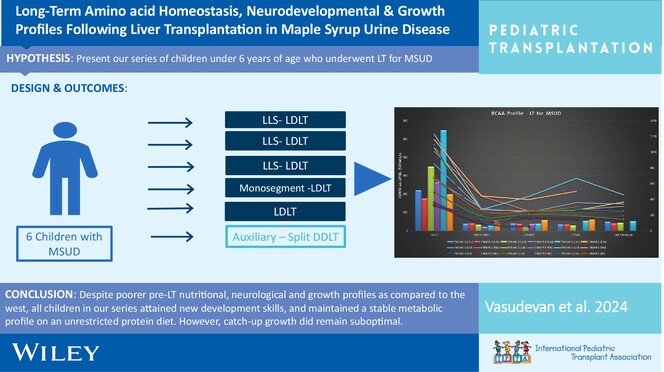
We present our series of LT for MSUD, highlighting their neurodevelopmental profiles and growth aspects within the socio-economic-cultural constraints prevalent in the Indian subcontinent. Despite poorer pre-LT profiles, all children attained new development skills and maintained a stable metabolic profile on an unrestricted protein diet. However, catch-up growth remained suboptimal.
Current Status and Outcomes of Living Donor Liver Transplantation for Pediatric Acute Liver Failure: Results From a Multicenter Retrospective Study Over Two Decades
- First Published: 19 August 2024
CASE REPORT
A Rare Case of Refractory Nodal Marginal Zone Lymphoma in a Child, Successfully Cured by Allogeneic Stem Cell Transplant: A Case Report
- First Published: 21 August 2024
ORIGINAL ARTICLE
The Consequences of HLA Screening in the Prevention of Graft-Versus-Host Disease in Living Donor Liver Transplantation
- First Published: 23 August 2024







